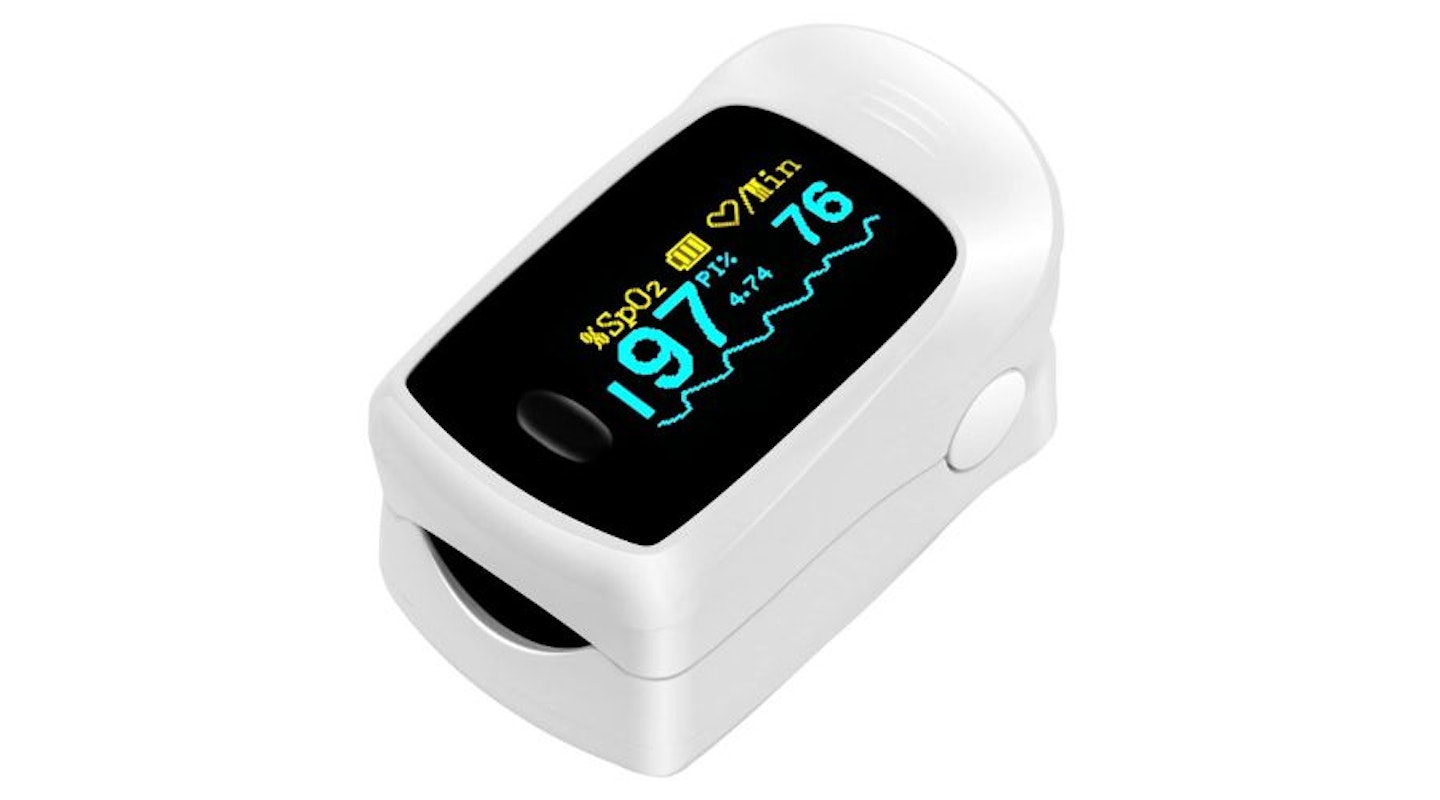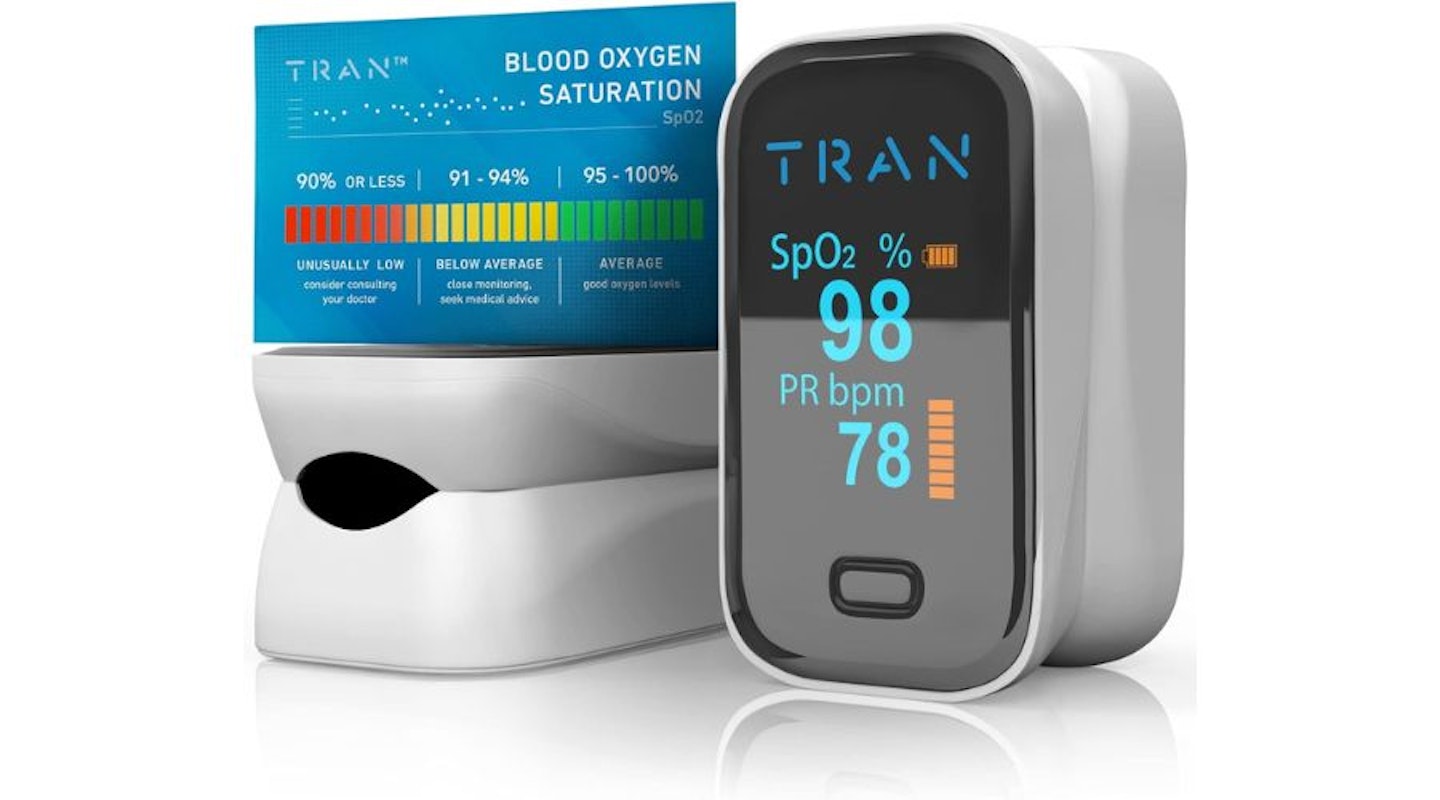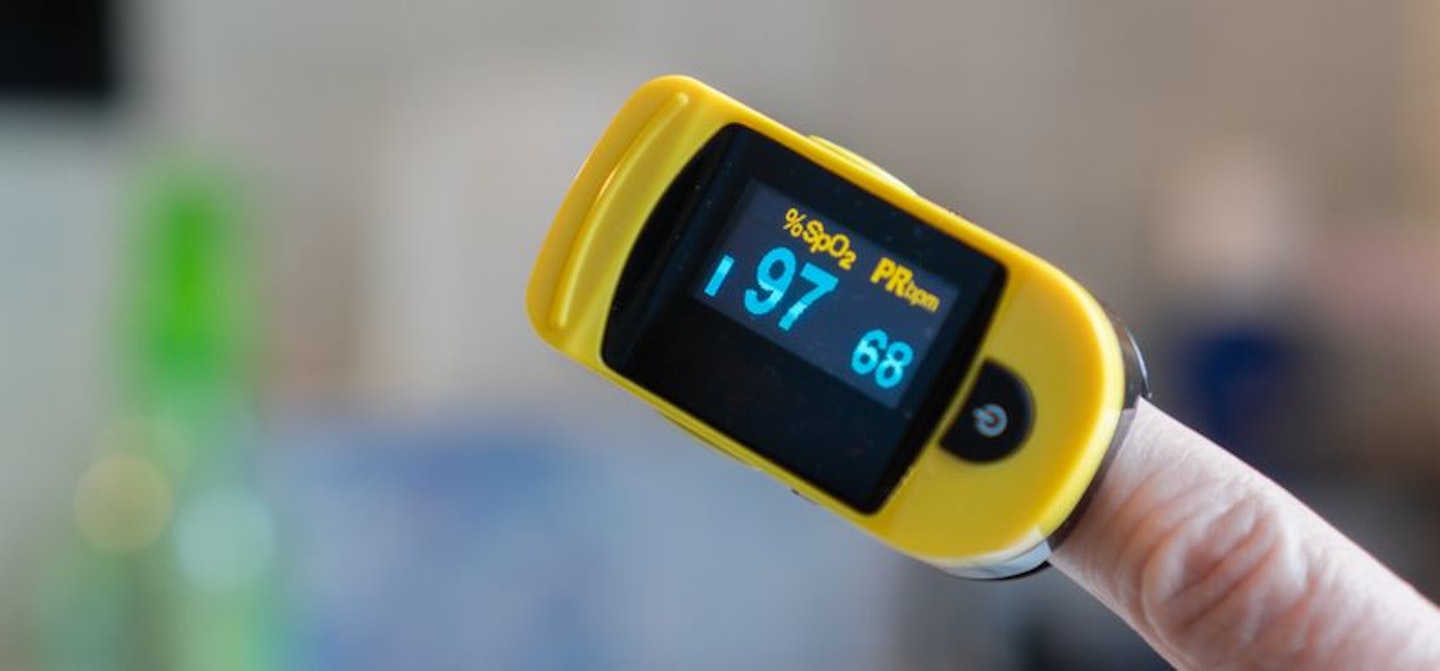Using a pulse oximeter is a great at-home piece of kit to monitor the oxygen levels in your blood to check that you're okay. The NHS and medical professionals widely use pulse oximeters to diagnose or monitor lung disease, and were widely used to monitor patients at home when suffering from Coronavirus. A good pulse oximeter can be a valuable tool for keeping track of your oxygen levels, but it's important to remember that not all pulse oximeters are equally effective.
The Medicines and Healthcare products Regulatory Agency (MHRA) does not directly approve medical devices such as pulse oximeters - and neither does the NHS. Instead, any pulse oximeter that's intended for clinical use will be regulated as a medical device, and will be expected to display a valid CE, CE UKNI or UKCA mark. This shows that it is compliant with regulations set by a designated approved body.
The best NHS-approved pulse oximeters at a glance:
• Best overall: OxiPro OX2 CE certified pulse oximeter - View on Amazon
• Best for clinically verified: Med Linket Monitor 5-in-1 - View on Amazon
• Best for being developed by NHS Doctors: TRAN Pulse Oximeter - View on Amazon
• Best for range and durability: Nonin 9590-BK Onyx Vantage - View on Amazon
Suppose you often find that you struggle with breathlessness or have asthma or a heart defect. In that case, we think having a quality pulse oximeter – such as the C.G.C Healthcare Pulse Oximeter – at home will greatly benefit you if you start feeling unwell or need to monitor your health. But whilst these can be a useful tool, they should never replace expert medical advice. If you're concerned about your oxygen levels, make sure you visit your doctor.
In order to help you reach the best decision possible in terms of what's right for you, we've examined the strengths and weaknesses of several great oximeters, considering factors like ease of use and accuracy. We've found the best available to buy today to keep you reassured about your well-being.
Best NHS-approved pulse oximeters of 2024:
Suitable for all ages, health professionals across the UK have used the OxiPro OX2 pulse oximeter, including doctors and nurses in NHS hospitals and private surgeries. CE-Class II certified and used as part of the oximeter at home program, this oximeter measures blood oxygen and pulse rate. It also measures perfusion index, which indicates the strength of your pulse at the finger sensor site. Crucially, it also claims that clinical trials have proven it to be accurate for users of all skin tones. This is important, as darker skin pigmentation can lead to overestimates of blood oxygen levels.
The LED colour screen is generally clear and easy to read, and the display rotates through 4 axes, making it easier to read whether you are measuring your own blood oxygen levels, or those of someone else. To take a reading, simply clip it onto your finger and press the ‘on’ button. You can get a reading in as little as 10 seconds although the manufacturer recommends waiting for a minute to get the most accurate results.
Pros
- Can deliver readings in as little as ten seconds
- Easy to use
- Certified as accurate for users of all skin tones
Cons
- Some may find the screen difficult to read
| SpO2 measurement range: | 70-100 per cent |
| SpO2 accuracy: | +/- 2 per cent |
| PR measurement range: | 30-250bpm |
| PR accuracy: | +/- 1bpm |
| Power: | requires 2 AAA alkaline batteries |
CE-certified, clinically verified and in compliance with EU standards, the Med Linket pulse oximeter features five-in-one health monitoring to provide readings for SpO2, body temperature, heart rate, perfusion index and plethysmograph. We like that this oximeter has an anti-shake function to help with trembling hands or active children and has been tested on different ages and skin colours for accurate measurements.
Like the first entry on our list, the AM801 has four screen orientations to make reading the OLED screen as easy as possible. It also has nine different display modes, and adjustable brightness levels so the screen remains visible even in bright conditions. Taking a body temperature reading is a relatively slow process, taking around five minutes. But this is a comprehensive monitoring device that offers a lot.
Pros
- Provides multiple readings
- Perfect for readings with shaking hands
- Perfect for monitoring rapid blood oxygen changes
Cons
- Flimsy design
| SpO2 measurement range: | 70-100 per cent |
| SpO2 accuracy: | +/- 2-3 per cent |
| PR measurement range: | 25-250bpm |
| PR accuracy: | +/- 3bpm |
| Power: | requires 2 AAA alkaline batteries |
As well as providing quick results and measurements fit for athletes, seniors, adventurers or for day-to-day wellbeing checks, the aCurio pulse oximeter is also suitable for children over four years old – perfect for keeping the whole family in check.
This pulse oximeter is CE and FDA-approved, and delivers readings in as little as eight seconds. As well as measuring blood oxygen levels, it can also track your pulse rate and perfusion index. It has a large display that’s easy to read, and it’s simple to use – put it on your finger and press the ‘on’ button, and it automatically takes a reading.
Pros
- Suitable for children
- Provides results quickly
- Accurate and well-designed
Cons
- A bit bulky
| SpO2 measurement range: | 70-100 per cent |
| SpO2 accuracy: | +/- 3 per cent |
| PR measurement range: | 30-250bpm |
| PR accuracy: | +/- 1bpm |
| Power: | requires 2 AAA alkaline batteries |
From the reputable Salter brand, this high-quality fingertip pulse oximeter is easy to use and has a clear OLED display which displays SpO2, PR and perfusion index, all at the push of a button. Ideal for those suffering from bronchitis, asthma or pneumonia, it's compact and has low power consumption for prolonged usage.
Like many of the best pulse oximeters, the PX-100 only has one button, to make taking a reading as easy as possible. The OLED 4-direction digital display is easy to read, whether you’re taking someone else’s reading, or your own. Once a finger has been removed from the device, it will automatically switch off after five seconds to conserve battery. It’s suitable for adults and children, as well as sports enthusiasts.
Pros
- Easy-to-read display
- Low power consumption
- Designed for long-term use
Cons
- Takes some time to display readings
| SpO2 measurement range: | 70-100 per cent |
| SpO2 accuracy: | +/- 2 per cent |
| PR measurement range: | 30-250bpm |
| PR accuracy: | +/- 2bpm |
| Power: | requires 2 AAA alkaline batteries |
Affordable, easy to use, and portable, the Braun Healthcare Pulse Oximeter is the perfect pick for adults wanting to watch their health as they age. It's lightweight and comes with a strap you can wear it with, so it's easy to take on the go. Since it's so lightweight, this pick is especially handy for those with sleep apnea.
This pulse oximeter is CE-marked to prove it has been clinically validated, and measures pulse rate as well as blood oxygen levels. The back-lit OLED display is bright and clear, and has six different viewing positions, making it as easy as possible to see what the readings are. It takes just a few seconds to deliver a reading.
Pros
- Lightweight
- Handy strap
- Ideal for athletes thanks to rapid reading
Cons
- Not suitable for children
| SpO2 measurement range: | 80-100 per cent |
| SpO2 accuracy: | +/- 2 per cent |
| PR measurement range: | 25-250bpm |
| PR accuracy: | +/- 1bpm |
| Power: | requires 2 AAA alkaline batteries |
Already used by hospitals and surgeries across the UK, the C.G.C Pulse Oximeter has had a 2024 update, which promises to deliver a more precise reading and improved reliability, thanks to a more accurate microprocessor. This device is suitable for all ages, and measure blood oxygen levels, perfusion index and pulse rate in as little as eight seconds. The device is suitable for adults, and children weighing 20kg or more.
Its silicon insert is designed to make it more comfortable to use, while the rotatable LED screen makes it easier to read whether you’re taking your own readings, or doing it for someone else. Crucially, it’s also CE and FDA-certified, making this a top choice for anyone looking for an accurate and reliable pulse oximeter.
Pros
- Suitable for adults and children
- More accurate than ever
- Silicone finger rest for comfortable use
Cons
- LED screen isn't the biggest
| SpO2 measurement range: | 0-100 per cent |
| SpO2 accuracy: | +/- 1 per cent |
| PR measurement range: | 30-250bpm |
| PR accuracy: | +2bpm |
| Power: | requires 2 AAA alkaline batteries (included) |
The ViATOM pulse oximeter offers blood oxygen and pulse readings, on an OLED screen that’s sharp and easy to read. As well as showing numbers, it also offers readings as a pulse wave, which for some, may make changes in readings easier to identify.
While all the pulse oximeters on this list provide readings in the moment, the ViATOM Pulse Oximeter lets you measure, manage and track SpO2 and pulse rate readings in the accompanying app with a detailed history report of your readings. While not everyone will want to use an app, it means this device offers an alternative way of monitoring your data. It also means you can use a larger display than that found on the pulse oximeter itself.
Pros
- The app is very useful
- Perfect for continuous reading
- Easy to use and accurate
Cons
- So-so without the app
| SpO2 measurement range: | 70-100 per cent |
| SpO2 accuracy: | +/- 2 per cent |
| PR measurement range: | 25-250bpm |
| PR accuracy: | +/- 2bpm |
| Power: | requires 2 AAA alkaline batteries (included) |
Best pulse oximeter for health enthusiasts
 BLT
BLTBLT has several pulse oximeters available on Amazon, and the CE-certified and FDA-approved M70B is versatile enough to recommend to sports and health enthusiasts such as climbers, skiers or cyclists looking to monitor their pulse and SpO2 before and after exercise. Small and with six display settings, it'll be easy to carry on your adventures to take quick measurements when needed.
The batteries can provide up to 18-hours of continuous use. But the automatic shut off after eight seconds means that they will last as long as possible. The large OLED display shows blood oxygen levels, pulse rate, perfusion index, plethysmograph, pulse bar, and battery level. This model doesn’t come with a lanyard, so you can’t hang it around your neck. This may be off-putting for some.
Pros
- Ideal for post-exercise readings
- Multiple displays
- Portable and compact
Cons
- Difficult to read due to small size
| SpO2 measurement range: | 0-100 per cent |
| SpO2 accuracy: | +/- 2 per cent |
| PR measurement range: | 25-250bpm |
| PR accuracy: | +/- 1bpm |
| Power: | requires 2 AAA alkaline batteries |
Best pulse oximeter being developed by NHS Doctors
 TRAN
TRANThe CE-approved TRAN Pulse Oximeter is quite a modern-looking oximeter, and true to that impression, you get a lot of quality-of-life features with it. Suitable for users of all ages, the TRAN pulse oximeter can measure blood oxygen levels and pulse rate. There’s also a pulse graphic on the display to indicate the speed and strength of your pulse, which is easy to read on the high-contrast OLED screen.
Super fast readings can be delivered in as little as five seconds, while an automatic shutdown system helps to preserve the batteries for as long as possible - the TRAN Pulse Oximeter is a great health gadget that anyone can rely on.
Pros
- Incredible battery life
- Quick readings
- Excellent array of features
Cons
- Can be slow to start
| SpO2 measurement range: | 70-99 per cent |
| SpO2 accuracy: | 70%~99 per cent ±3 per cent; ≤69 per cent unspecified |
| PR measurement range: | 30-235 bpm |
| PR accuracy: | 30~99 bpm ±2 bpm; 100~235 bpm ±2 per cent |
| Power: | requires 2 AAA alkaline batteries |
What is a pulse oximeter?
A pulse oximeter is a small gadget that you clip onto the tip of your middle or index finger that you simply switch on for it to shine light through your finger to work out the oxygen levels.
This beam measures the light absorption in the oxygenated blood - it is quick, non-invasive and painless, and you just need to wait for the numbers shown to settle to give you your readings.
A pulse oximeter is light, portable and comes with an LED screen which will clearly display your measurements in a matter of seconds.
How to read a pulse oximeter?
A pulse oximeter tests how fast your heart is beating – shown as PR for pulse rate or bpm – and how well you are breathing by checking how much oxygen is being carried by the haemoglobin in your blood, shown as SpO2.

For someone who is healthy, the normal blood oxygen saturation level will be around 95 per cent or above.
It is great for indicating to your doctor if you're getting better or more unwell and means you can get the treatment you need at the right time.
Using a pulse oximeter at home
Pulse oximeters used in medical settings or hospitals are high-quality and likely to give you the most accurate reading. Pulse oximeters are available for sale in your local chemist or online for use at home, and while they will record your oxygen levels, some can be inaccurate or give poor readings if used incorrectly.
It is important to invest in one that has been NHS approved, comes from a reputable retailer or has been recognised for its quality. While it may not be necessary for everyone, this gadget could be used by individuals with underlying respiratory issues who may want to monitor or assess the severity of attacks or physically active people who experience regular drops in oxygen levels.
Things that can affect the accuracy of your test include:
• If you are wearing nail varnish or artificial nails
• Your hands are cold – make sure they're warmed first
• You're not sitting still – activity can raise your heart rate and decrease your oxygen levels shown, or move the oximeter out of place
• Your skin is thicker than normal
• If you're a smoker, the oxygen level shown may be higher than your actual oxygen
• Skin pigment can also impact the accuracy of pulse oximetry. Studies have shown that oximeters can overestimate oxygen saturation, so you should check your oximetry readings with your provider or GP if you're concerned.
How to use the best NHS-approved pulse oximeters
To use a pulse oximeter to measure your pulse rate and oxygen levels, you simply need to clip the device to your fingertip, switch it on and wait a short time for the results to show. Make sure to take the right precautions so the results are as accurate as possible.
This handy video from the NHS shows you how to use any of the best NHS-approved pulse oximeters at home under their expert guidance and how you might monitor your readings if you've been asked to use one by your GP or health professional.
When to seek medical attention
Before testing at home, it is advised to speak to your GP first, as they will be aware of your condition and be able to advise on the best process of monitoring. The best NHS-approved pulse oximeters are only an aid.
If you're measuring at home, it is advised to seek medical attention if:
• Breathing gets suddenly worse
• You can't finish a short sentence because of breathlessness
• The blood oxygen number of the pulse oximeter stays at 92 per cent or less
• You have additional symptoms linked to Coronavirus
If you're feeling otherwise fine and your reading is outside the normal range, this isn't always a sign of a health problem. While oxygen levels should remain at 90 per cent or higher, your heart rate may be affected by your activity. Make sure you're warm and relaxed and try again, or speak to your GP with any concerns. And remember, even the best NHS-approved pulse oximeters need their batteries changing now and then.
Eleanor Weaver is a Commercial Content Writer for titles such as Yours, What's The Best and Mother&Baby.
Subscribe to the What's The Best Newsletter to keep up to date with more of the latest reviews and recommendations from Eleanor and the rest of the What's The Best team.














